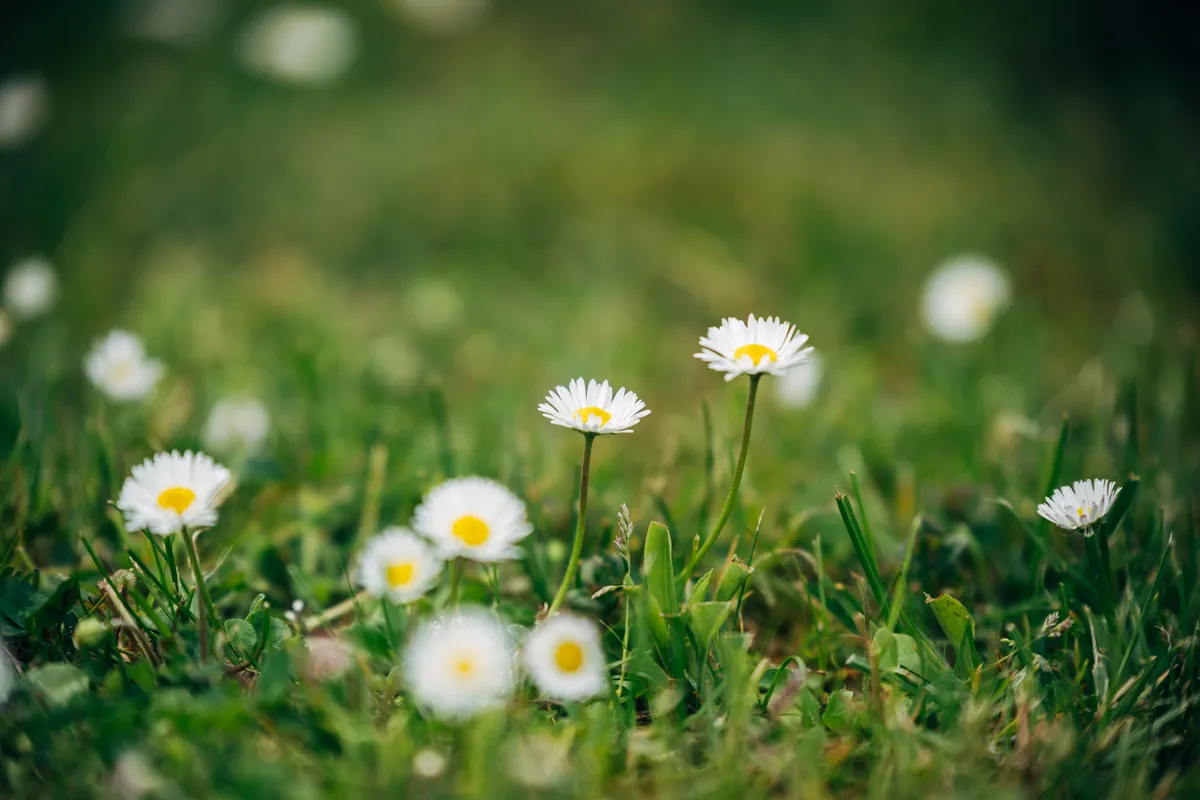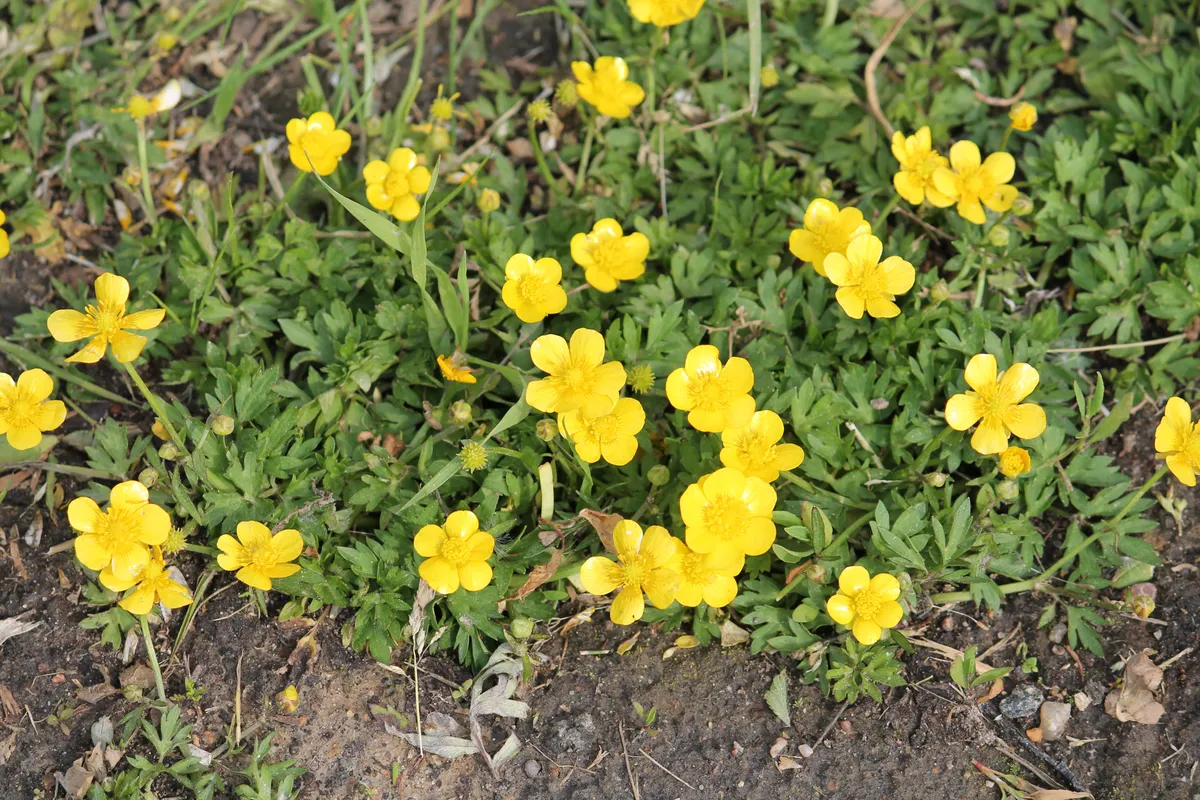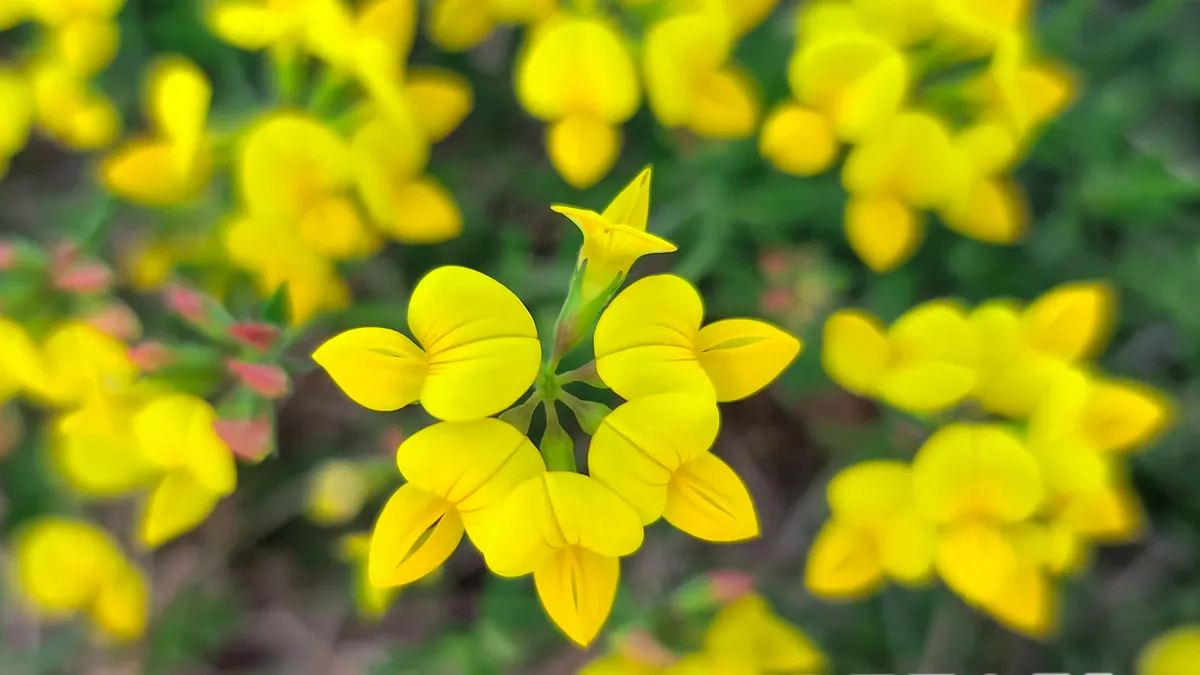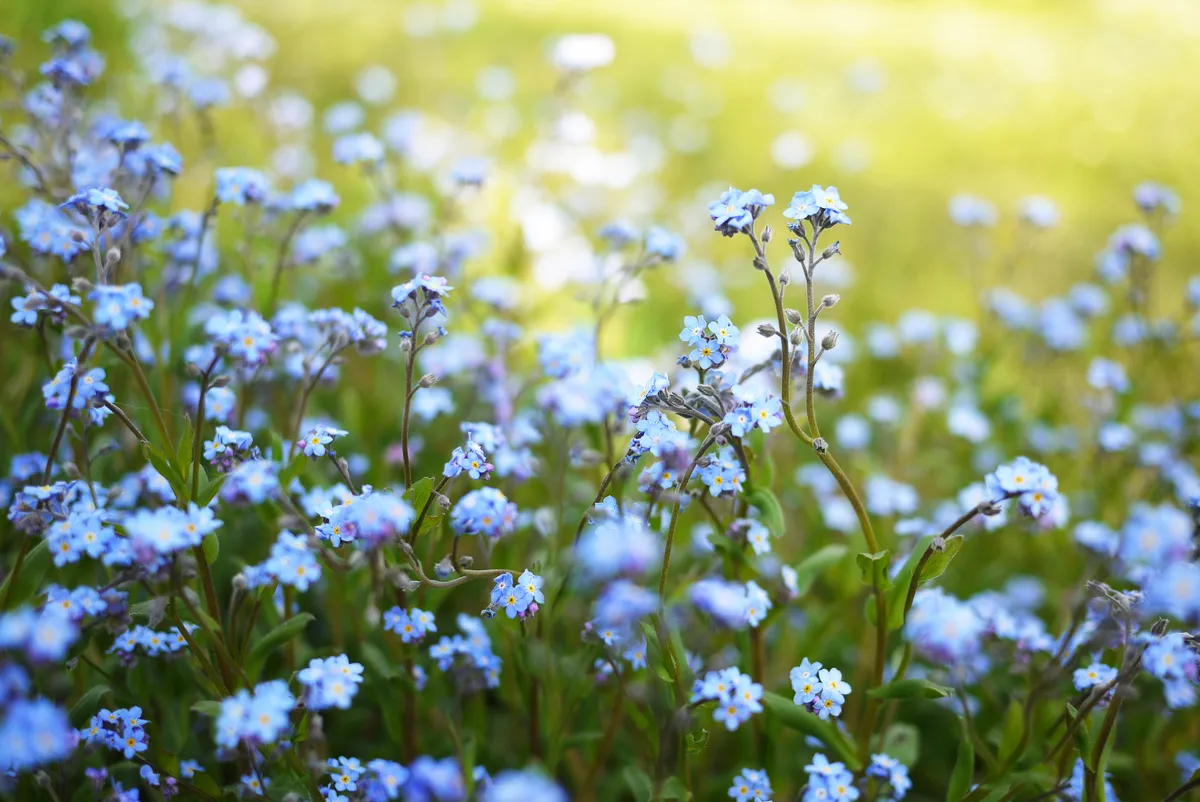No Mow May is back this year, bringing another boost of much-needed nectar to pollinators across gardens, parklands and verges as gardeners throughout the UK pledge not to mow their lawns for the month.
The movement was started in 2019 by conservation charity Plantlife, who is once again urging people to keep the mower locked up for another month to allow spring plants a chance to set seed before the first cutting, making for healthier, more diverse lawns.
Additionally, this gives wild plants to get a foothold in May, to feed bees, butterflies and other pollinators through summer.
“Swerving mowing in May doesn’t only boost spring wild flowers, it also allows people a little extra time to enjoy our glorious green spaces and connect with nature,” says Plantlife's senior ecological advisor Sarah Shuttleworth.
“This reclaimed time can be used to enjoy and explore wildlife friendly activities – like building a bug hotel, installing a wildlife pond or simply admiring the beauty of garden wildlife. From finches feeding on dandelion clocks to slow worms slithering in the sun there’s so much to marvel at in wilder gardens.”

What is No Mow May?
No Mow May is a national campaign to encourage people not to mow their lawns throughout the month of May in order to boost the flowers, and nectar, available to pollinating insects such as bees, butterflies and moths.
It also allows spring flowers to set seed and plants to establish themselves in advance of the summer.
Why you should try No Mow May
Following the severe drought of 2022, the UK has seen a shift in its attitude towards the traditional bowling-green lawn as gardeners look for alternatives. Programmes such as Wild Isles have highlighted the fact that the UK has lost 97% of its wild meadows in recent years, putting classic meadow plants like ragged robin, field scabious and devil’s-bit scabious on to the Near Threatened list.
In 2023, for the first time, one-third of the gardens at Chelsea Flower Show featured weeds, including bramble, thistle and knapweed. Tom Massey, who created a garden for the Royal Entomological Society (RES) says he regards weeds as “resilient plants”.
“People often get really stressed out about dandelions on the lawn,” Massey told The Times, “but they are a good source of nectar because they flower early in the year and they’re really nice to look at. Even foxgloves and knapweed [are welcome]. There’s a lot of stigma around the word ‘weed’.”
Meanwhile, the Wildlife Trusts and Royal Horticultural Society (RHS) have launched a campaign called Wild About Lawns to encourage gardeners to champion dandelions and other wildflowers by letting lawns grow longer, allowing dandelions to flower. Alison Steadman, Wildlife Trusts ambassador, spoke out in support of Wild About Lawns.
“I absolutely love relaxing in my garden listening to birdsong. Longer lawns offer birds the perfect foraging spots especially when there are plenty of wildflowers in amongst the grass. One of my favourite animals is the hedgehog and what better way to make them feel welcome than a luscious patch of grass and wildflowers to hunt for worms and beetles?”
Plantlife campaign research has revealed that mowing your lawn less frequently can provide enough nectar sugar for ten times the amount of bees, butterflies, moths, beetles and other pollinators. Since its launch in 2019, gardeners who take part report up to 250 species of plants, including wild garlic, wild strawberry, declining orchids and the rare meadow flower snakeshead fritillary, flowering within the grasses.
What flowers could appear in my lawn?
The charity has revealed that the top five most common recorded plants in lawns are daisies, creeping buttercups, yellow rattle, common bird's foot trefoil and field forget-me-nots.
Dandelions are a particularly good superfood for bees and butterflies. Despite being outnumbered by daisies 85 to 1 on a typical 100m2 lawn, they produce 9% of the lawn's pollen and 37% of its nectar sugar.
How to take part in No Mow May 2025
All you have to do is leave your mower in the shed for No Mow May and watch the flowers fill your lawn. Sign up at plantlife.org.uk/campaigns/nomowmay.
What happens after No Mow May?
In the long term, Plantlife recommends cutting sections of the lawn at different frequencies, to allow short-growing flowers to flourish alongside longer ones. Mowing twice a year will maintain a meadow. Mowing once every 4-6 weeks will maintain a shorter, re-flowering lawn where flowers like bugle, self-heal, red clover and lady’s bedstraw can thrive.
Make sure you compost your cuttings
“The removal of cuttings is crucial to encouraging plant diversity," says Mark Schofield, Plantlife's road verges advisor.
“When cuttings are left to rot down on lawns, this enriches the soil and creates an environment where more competitive grasses and species like nettles, hogweeds and thistles take over, smothering the rest of our wild flora.”
Why shouldn't you cut the grass in May?
There's no doubt that providing food for pollinators is critical to their survival. We've lost 97% of our wildflower meadows in the past 70 years in the UK, and insects are in worrying decline with butterflies down by about 50% since 1976, and 13 species of bee now extinct.
A recent study found that rural honey bees have to fly further to find food than their urban counterparts, which suggests that wild flowers are much less abundant than those grown in the gardens of more built-up areas. But why May?
Traditionally, May is the time when the soils are warm enough for grasses to really start shooting up. Most gardeners are keen to get the mower out and transform that scraggly patch of grass into a thriving lawn. In fact, Plantlife's 2019 survey revealed that most of us cut the grass every two weeks. But hold off from cutting it a little while longer, and you can give UK pollinators – and the birds and animals who eat them – a much-needed boost.
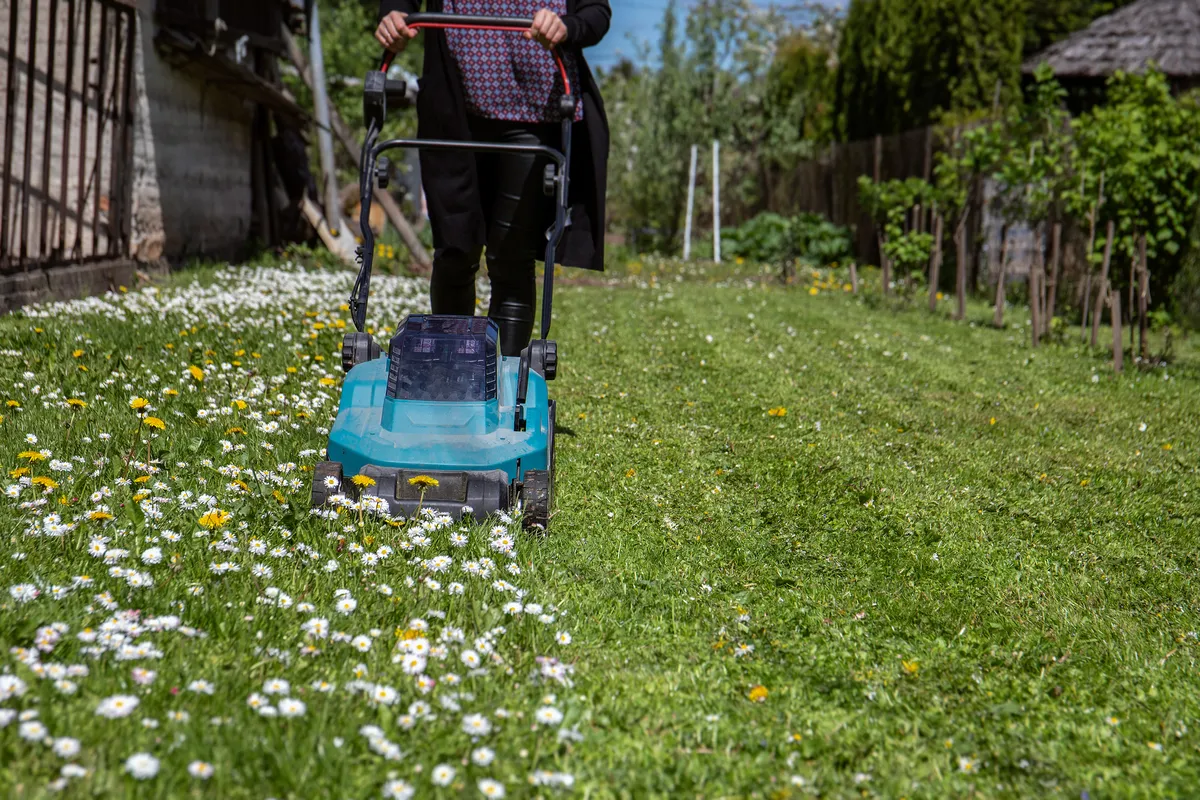
What are the downsides of No Mow May?
Not all agree that No Mow May is a good thing, with some people saying that creating an environment for wildlife and then destroying can have a negative impact on anything that has made a home or laid eggs there. Some argue that you should either leave your grass long all year round, leave an area long all year round, or not do No Mow May at all.
How to mow for wildlife all year round
A few simple changes can really help the insects in your patch. Here are three things you can do now:
• Cut once every four weeks Plantlife's survey last year found that those with the highest production of flowers and nectar sugar were the participants who mowed their lawns once every four weeks.
• Leave areas of your lawn uncut As well as the shorter-growing species such as daisies, white clover and bird's foot trefoil, many flowers that need to grow taller in order to flower. Ox-eye daisies, red clover and knapweed can flourish in corners of the garden that are left to grow – and they look lovely as well.
• Stop using weedkiller This may seem obvious, but weedkiller will kill the flowers growing in your lawn, as well as contaminating the soil around it. Some weedkillers can remain active in the soil for a year after application, and it is not yet fully known what the effect on insects and invertebrates is. If you can't bear the dandelions, take them out by hand.
Who started No Mow May?
British conservation charity Plantlife started No Mow May in 2019.
Plantlife's mission is to save threatened wild flowers, fungi and plants. It owns nearly 4,500 acres of nature reserve across England, Scotland and Wales. HRH The Prince of Wales is Patron of the charity.
Main image credit: daisy and trefoil lawn/Credit: Getty
